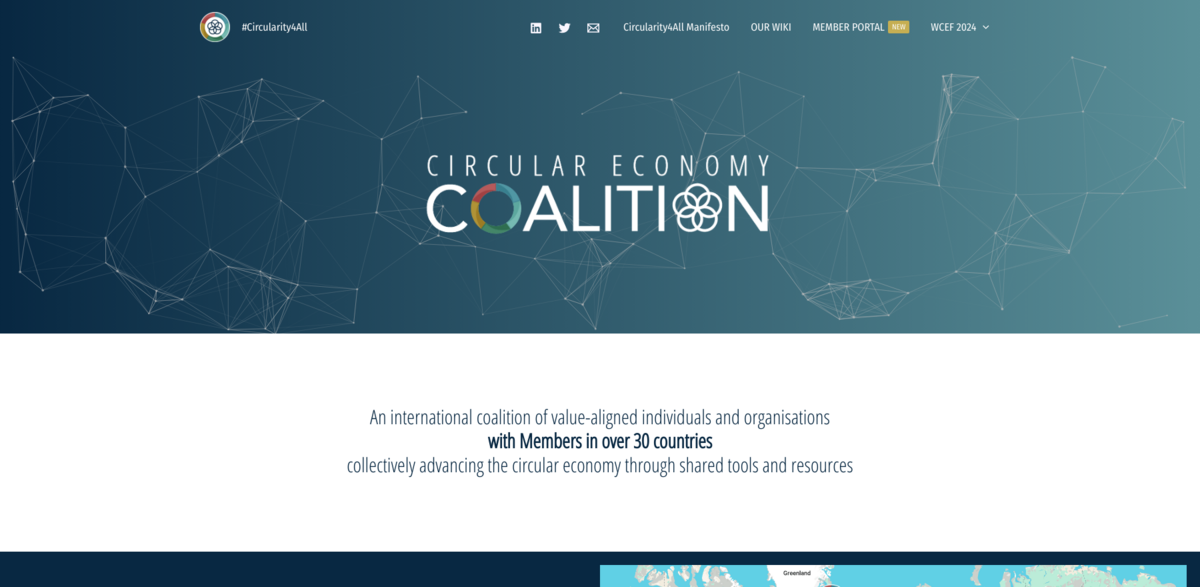What is the Circular Economy Coalition?
The Circular Economy Coalition is an international coalition made up of value-aligned individuals and organisations. With members spanning over 30 countries, this group is collectively pushing forward the circular economy by sharing tools and resources. It’s all about collaboration—bringing together diverse voices and expertise to advance a more sustainable and equitable economic model worldwide.
Main Benefits of the Coalition
So, what does this coalition actually aim to do? Here’s a quick rundown of its core goals:
- Strengthen multilateral relations and knowledge sharing between the Global North and South by bridging bottom-up and top-down circularity.
- Support a Shared Intelligence through data-driven solutions for mapping best practice circular initiatives aligned with internationally recognized frameworks.
- Support the development of better policies and economic incentives through research and dissemination.
- Increase collaboration on projects with stakeholders at all levels.
- Experience sharing and joint development of circular economy projects.
A Shared Vision: Circularity 4 All
At the heart of the coalition is a shared vision called Circularity 4 All. Imagine a world where living, biological, technical, and financial resources are maintained and kept in use at their highest societal value—always. Not just for profit, but for people and the planet. It’s a paradigm shift that challenges the status quo and aims for a future where resources serve society in the most meaningful way possible.
The 6 Pillars for a Paradigm Shift
The coalition’s work is guided by six pillars, each with principles that pave the way for this transformation. Let’s break them down:
- Economic Transformation: Moving away from GDP-focused metrics to ones valuing wellbeing, environmental health, and social equity. It’s about challenging old economic models and supporting inclusive, non-extractive finance.
- Social Equity and Justice: Ensuring circular economy initiatives tackle social inequalities, promote inclusivity, and respect indigenous wisdom and cultural diversity.
- Environmental Sustainability: Prioritizing ecological balance, closing resource loops, driving renewable energy adoption, and encouraging responsible consumption.
- Regenerative Practices: Promoting restoration of natural systems, strengthening local economies, and advancing regenerative agriculture.
- Innovation and Infrastructure: Embracing resilience, supporting sustainable infrastructure, and measuring holistic impacts across environmental, social, and economic dimensions.
- Collaboration and Policy: Fostering global cooperation, advocating for supportive policies, cultivating shared values, and enhancing community participation.
Driving Real Impact Through Collaboration
The coalition isn’t just about lofty ideas—it’s about real-world impact. By fostering collaboration between the Global North and South, it encourages shared sustainability goals that are inclusive and actionable. It pushes for policy changes that back circular economic models and integrates circular principles into education at all levels. Plus, it empowers communities to actively participate in creating local circular solutions. It’s a movement that’s as much about people as it is about the planet.
Linking to the Sustainable Development Goals (SDGs)
- SDG 1: No Poverty
- SDG 2: Zero Hunger
- SDG 7: Affordable and Clean Energy
- SDG 8: Decent Work and Economic Growth
- SDG 10: Reduced Inequalities
- SDG 11: Sustainable Cities and Communities
- SDG 12: Responsible Consumption and Production
- SDG 13: Climate Action
- SDG 15: Life on Land
- SDG 17: Partnerships for the Goals
Why Circularity4All Matters
Guided by a common vision, Circularity4All aspires to maintain and utilise resources according to their highest societal value—not just their highest commercial value. This shift is crucial for a future where people and the environment thrive together. The Circularity4All manifesto isn’t just a document; it’s a roadmap to a future where humans can still exist… sustainably, fairly, and in harmony with nature. It’s a call to rethink how we live, work, and grow—because the future depends on it.





















